
A woman in Arizona and a man in Sonora, Mexico, hug across the border during the "Rally for the Valley" event in the San Rafael Valley, Arizona, border and environmental advocates on both sides of the border gather to oppose the ongoing construction of a new border wall in the area, on Saturday, Nov. 15, 2025. (César Barrón/CALÓ News)
SAN RAFAEL VALLEY – Dozens of people gathered in the San Rafael Valley in southern Arizona over the weekend to express their opposition to the construction of the new border wall.
This is one of the last stretches of land along the southern Arizona border without a wall. Organizations such as Sky Island Alliance — whose mission, according to its website, is to protect and restore the land — consider this area a crucial wildlife corridor.
The San Rafael Valley is located in southern Arizona, east of Nogales, between the Patagonia and Huachuca Mountains, and borders the border wall near Santa Cruz, Sonora.
The Saturday event, called “Rally for the Valley,” brought together representatives from the Sierra Club and the Sky Island Alliance, residents from both sides of the border, members of the Tohono O’odham Nation and recently sworn-in U.S. Congresswoman Adelita Grijalva (D-AZ) in an effort to defend the valley and denounce the damaging impacts of the new construction.

U.S Rep. Adelita Grijalva (D-AZ) speaks during the "Rally for the Valley" event in the San Rafael Valley, Arizona, where border and environmental advocates from Arizona and Sonora demonstrated against the ongoing construction of a new border wall in the area, on Saturday, Nov. 15, 2025. (César Barrón/CALÓ News)
The meeting took place at noon, about 200 meters from the construction site. To reach the meeting point, one had to travel approximately 20 minutes by car east of Lochiel.
Grijalva expressed her disagreement with the construction of the new wall. During her speech to the dozens of people present, she called the project an unnecessary expense and questioned its justification. She said she wanted to ask how many people have passed through that area and also expressed concern about the water used in the project.
Erick Meza, border coordinator for the Sierra Club, said the mobilization was organized so that communities living around the valley or connected to the area could witness the ecocide occurring there due to the project, which began in September.
He added that they invited public officials to witness the situation and advocate for change, hoping to keep the area free of walls and allow local animals to roam freely.

Erick Meza, border coordinator for the Sierra Club, speaks during the "Rally for the Valley" event in the San Rafael Valley, Arizona, where border and environmental advocates from Arizona and Sonora demonstrated against the ongoing construction of a new border wall in the area, on Saturday, Nov. 15, 2025. (César Barrón/CALÓ News)
"Another worrying aspect is the amount of water used to mix the concrete and control dust, in addition to the stone and gravel extracted from the mountain," Meza commented.
This also affects Mexico, he said, because the two countries share the same aquifer for water extraction. He added that they will continue the fight, including holding these types of events, with direct action to see what kind of attention they can get because people need to understand that the construction of the wall is completely unnecessary.
The project is being led by Fisher Sand & Gravel Company, which has been contracted to build a 30-foot-high wall that will stretch 27 miles. According to data from the U.S. Customs and Border Protection (CBP), the investment exceeds $300 million. Work will continue until 2027 to complete the construction.
Continued militarization of a binational community
In front of the construction wall, the Mexicayotl dance group performed a ceremonial presentation, which was also witnessed by residents of Sonora who attended the rally. Cuauhtémoc — a political name, he clarified — a member of the group, explained that their dance style is political, using it to tell people what is happening in Mexico and the United States.

A man who goes by Cuahtémoc poses for a photo during the "Rally for the Valley" event in the San Rafael Valley, Arizona, where border and environmental advocates from Arizona and Sonora demonstrated against the ongoing construction of a new border wall in the area, on Saturday, Nov. 15, 2025. (César Barrón/CALÓ News)
Once the ceremony was over, those on the Mexican side shared potato and machaca burritos, beef burritos with red chile sauce and bean burritos, while those on the U.S. side did the same. The action became a cross-border gesture.
Rubén Peralta, a resident of Santa Cruz, Sonora, said he opposed the construction because of its negative impact on nature and on the passage of deer, bobcats, raccoons and pronghorns.
Some attendees carried cardboard cutouts of animals like coyotes and jaguars; others carried birds mounted on wooden sticks, which they lifted to simulate flight.

During the "Rally for the Valley" event in the San Rafael Valley, Arizona, border and environmental advocates from Arizona and Sonora gather to oppose the ongoing construction of a new border wall in the area, on Saturday, Nov. 15, 2025. (César Barrón/CALÓ News)
Jen Allen, supervisor of Pima County District 3, was also present. She commented that her district has about 120 miles of border. “We can see how this administration wants to continue militarizing our border, even though our communities are like a binational community,” he noted.
John Fanestil, executive director of the Friends of International Friendship Park organization, was also present and compared the situation to what happened in San Diego 20 years ago. Walls prohibit interaction, he commented.
The Friends of International Friendship Park website promotes a park that is safely accessible from both the north and south, a shared space to learn, connect and forge friendships on both sides of the border.
The San Rafael Valley is one of the most important ecological regions in southern Arizona, known for its biodiversity and for being a natural corridor for multiple species.

During the "Rally for the Valley" event in the San Rafael Valley, Arizona, border and environmental advocates from Arizona and Sonora gather to oppose the ongoing construction of a new border wall in the area, on Saturday, Nov. 15, 2025. (César Barrón/CALÓ News)
Eamon Harrity, wildlife program manager for the Sky Island Alliance, explained in a September interview with CALÓ News that approximately 85 percent of the animals that encounter the wall cannot cross — nine out of 10 animals do not cross — so the new wall will impact the region's animals, including coyotes, pumas, bears, wild boar, two species of deer, porcupine, coatis, rabbits, hares and jaguar.
César Barrón is an independent reporter covering the transnational communities of Ambos Nogales. He has over 20 years of experience covering the Sonoran communities.

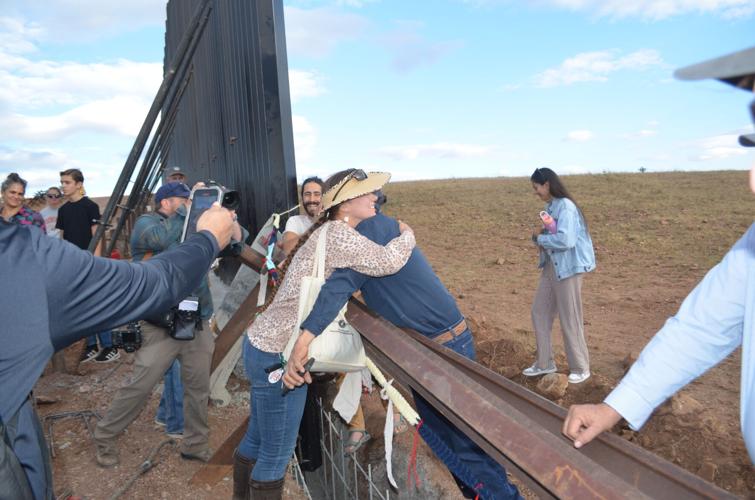
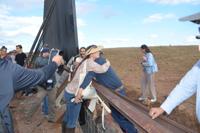

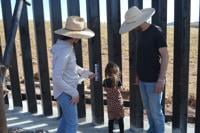
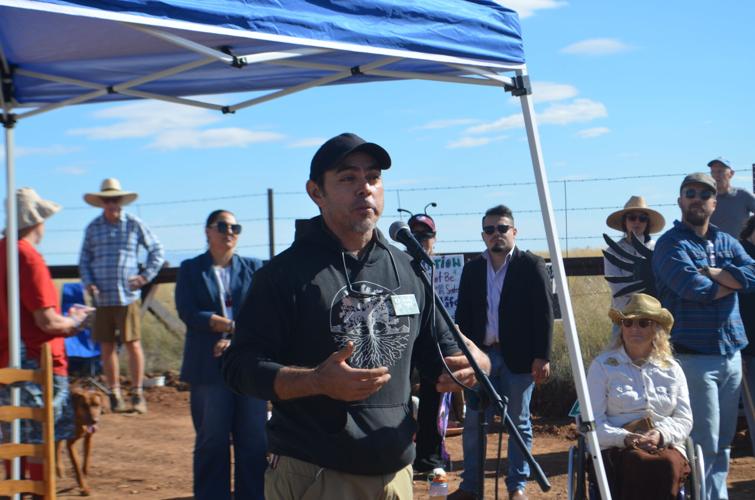

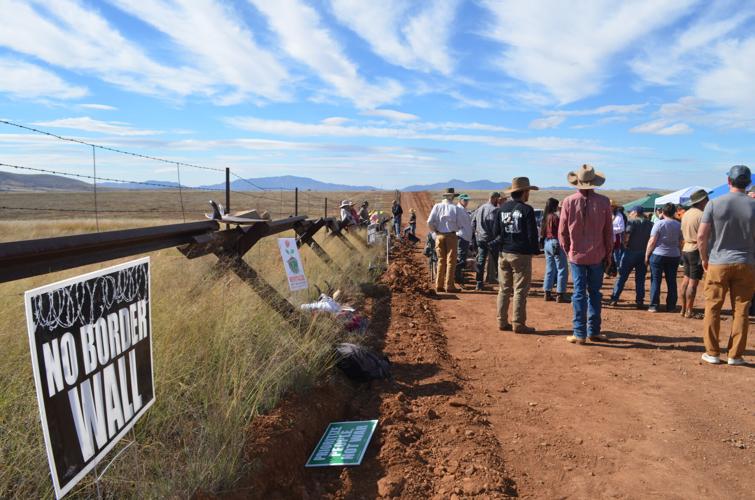
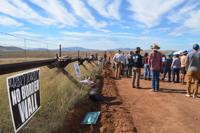
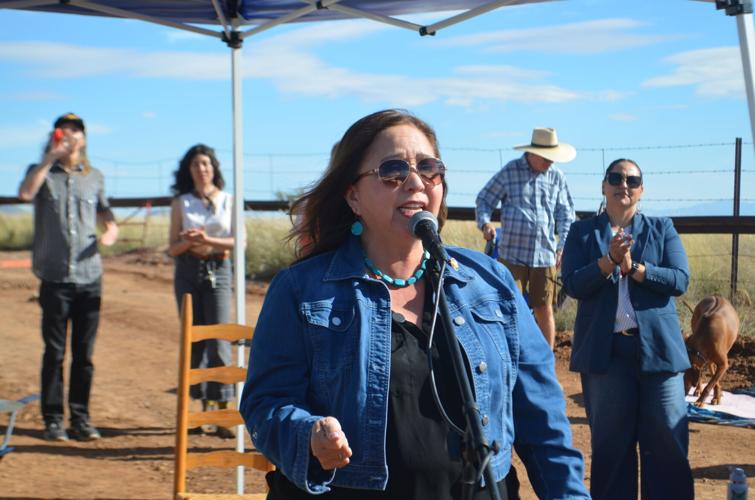
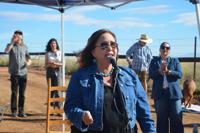

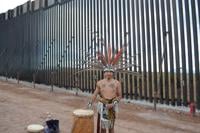


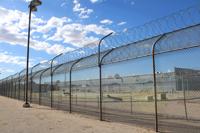



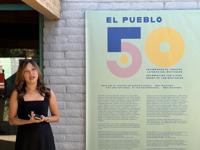

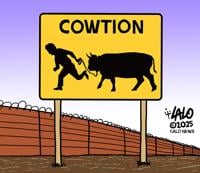
(0) comments
Welcome to the discussion.
Log In
Keep it Clean. Please avoid obscene, vulgar, lewd, racist or sexually-oriented language.
PLEASE TURN OFF YOUR CAPS LOCK.
Don't Threaten. Threats of harming another person will not be tolerated.
Be Truthful. Don't knowingly lie about anyone or anything.
Be Nice. No racism, sexism or any sort of -ism that is degrading to another person.
Be Proactive. Use the 'Report' link on each comment to let us know of abusive posts.
Share with Us. We'd love to hear eyewitness accounts, the history behind an article.